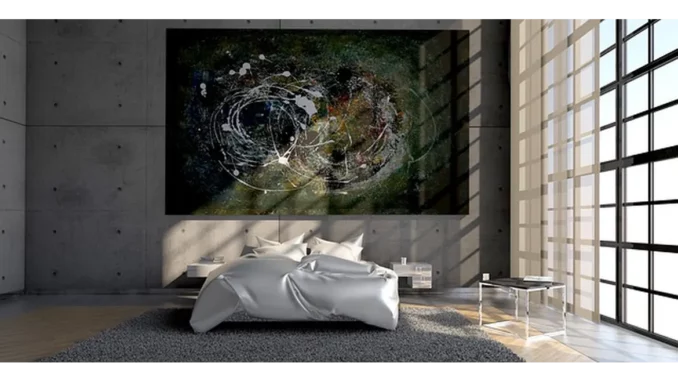
Transform Your Bedroom into a Serene Sanctuary: Expert Strategies for Ultimate Relaxation
In today’s fast-paced world, your bedroom should be more than just a place to sleep—it should be a sanctuary where you can unwind and rejuvenate. With expert advice and a touch of elegance, we’ll guide you through the transformative process of creating a relaxing bedroom that exudes tranquility and comfort.
1. Choose Soothing Colours
The colour palette of your bedroom plays a pivotal role in setting a calming tone. According to colour psychology experts, soft, cool colours such as blues, greens, and lavenders have a profound calming effect that can significantly enhance your sense of peace and relaxation.
Blue:
Blue is renowned for its serene and tranquil qualities. Light blue shades, in particular, can lower blood pressure and reduce anxiety, making them ideal for creating a peaceful bedroom environment.
Green:
Representing nature, green hues evoke a sense of balance and harmony. Soft greens can transform your space into a calming retreat, promoting relaxation and mental clarity.
Lavender:
Lavender’s gentle, soothing properties are perfect for a bedroom. This calming colour can help alleviate stress and anxiety, fostering a tranquil atmosphere conducive to restful sleep.
2. Optimise Your Bedroom Layout
The arrangement of your bedroom furniture can greatly influence the room’s overall feel. A well-thought-out layout can create a sense of order and tranquillity.
Bed Placement:
Position your bed so that you can see the door without being directly in line with it. This arrangement fosters a sense of security and control, which can enhance relaxation and improve sleep quality. Avoid placing your bed under a window, as it can create a feeling of instability.
Furniture Arrangement:
Opt for simplicity and functionality in your furniture arrangement. Avoid overcrowding your room with excessive furniture; instead, select a few essential pieces that contribute to the room’s aesthetic and practicality.
Declutter:
A clutter-free environment is essential for relaxation. Eliminate unnecessary items and keep surfaces clear. Utilise storage solutions like baskets, bins, and shelves to keep your belongings organised and out of sight.
3. Create a Soothing Ambience with Lighting
Lighting is a crucial element in establishing a relaxing bedroom. The right lighting can set a tranquil mood and enhance the overall atmosphere.
Natural Light:
Maximise natural light during the day by keeping windows unobstructed. Natural light positively affects mood and helps regulate your sleep-wake cycle.
Soft Lighting:
In the evening, use soft, warm lighting to create a cosy and relaxing ambiance. Table lamps, floor lamps, and wall sconces with dimmable bulbs are excellent choices. Avoid harsh overhead lights, as they can be too stimulating.
Candles and String Lights:
Candles and string lights add a touch of warmth and coziness. The soft glow of candlelight creates a serene atmosphere, perfect for winding down before bed.
4. Invest in Comfortable Bedding
Your bed is the centrepiece of your bedroom, and investing in high-quality bedding is essential for creating a relaxing environment.
Mattress:
A high-quality mattress that provides the right level of support and comfort is crucial for a good night’s sleep. Consider your personal preferences and sleep style when choosing a mattress.
Pillows:
Select pillows that provide adequate support for your head and neck. A mix of pillows with different firmness levels can create a comfortable and inviting bed.
Bedding:
Opt for soft, breathable bedding made from natural materials like cotton or linen. These materials are gentle on the skin and help regulate body temperature. Layering your bed with cosy blankets and throws can enhance its inviting appeal.
5. Incorporate Calming Elements
Adding elements that promote relaxation can significantly enhance your bedroom’s tranquillity.
Plants:
Incorporate plants like lavender, jasmine, and aloe vera, which improve air quality and have calming properties. These plants can reduce stress and anxiety, contributing to a serene environment.
Aromatherapy:
Utilise essential oils such as lavender, chamomile, and eucalyptus, known for their relaxing properties. A diffuser can fill your bedroom with soothing scents that promote relaxation and sleep.
Textures:
Incorporate soft textures through plush rugs, cosy blankets, and velvet cushions. These tactile elements can enhance the overall comfort and coziness of your bedroom.
6. Minimise Noise
A quiet bedroom is essential for relaxation and sleep. Soundproofing solutions like heavy curtains, rugs, and upholstered furniture can help minimise noise. Consider using a white noise machine or a fan to drown out any disruptive sounds.
7. Personalise Your Space
Ultimately, your bedroom should reflect your personal style and bring you joy. Display photos, artwork, and decor that have sentimental value and create a sense of connection and happiness.
By incorporating soothing colours, optimising your bedroom layout, investing in comfortable bedding, and adding calming elements, you can transform your bedroom into a serene sanctuary that promotes relaxation and restful sleep. Indulge in these expert strategies to create a space that truly feels like a retreat.


Be the first to comment